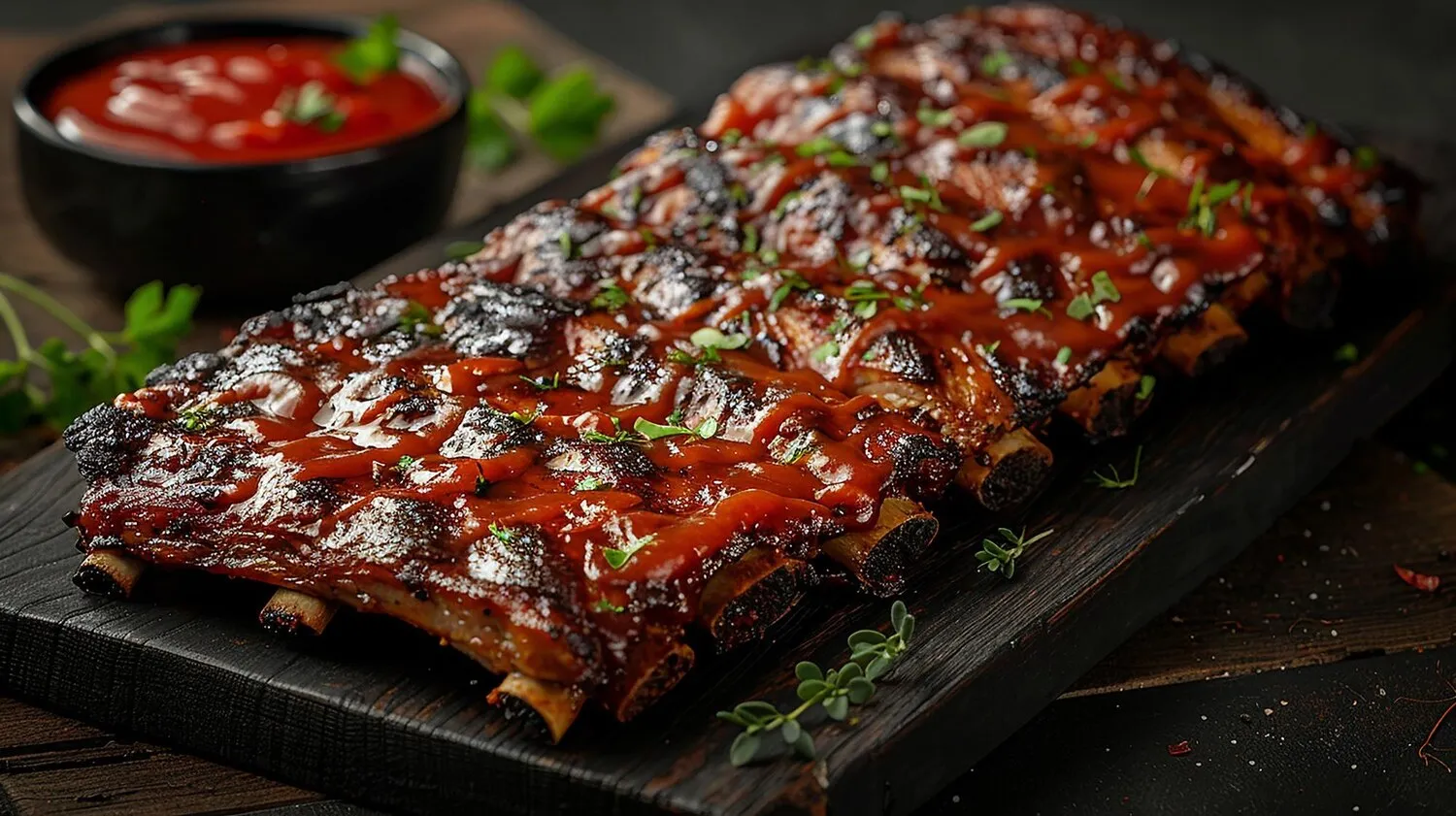
Spareribs (Various Flavors)
Ribs Factory is known for its spareribs, offering different flavors like classic BBQ, sweet and spicy, honey garlic, and more. They are usually served with side dishes.
Nutrition Facts
* The % Daily Value (DV) tells you how much a nutrient in a serving of food contributes to a daily diet. 2,000 calories a day is used for general nutrition advice.
The history of spareribs is rooted in the practice of utilizing all parts of the animal for sustenance. Different cultures around the world have developed unique methods for preparing and flavoring ribs, evolving into the diverse styles we see today, particularly in American barbecue traditions.
Spareribs are deeply ingrained in American barbecue culture, often associated with gatherings, celebrations, and regional culinary traditions.
Barbecue Culture
Spareribs are a staple of barbecue, representing community, slow-cooked goodness, and regional pride. Barbecue competitions often feature spareribs as a key judging category.
Family Gatherings
Spareribs are often prepared for family meals, parties, and holidays, fostering a sense of togetherness and shared enjoyment of food.
Regional Variations
Different regions of the United States have distinct barbecue styles, influencing the preparation and flavor of spareribs. Examples include Memphis-style dry-rub ribs, Texas-style beef ribs (sometimes pork), and Kansas City-style sweet and tangy ribs.
Spareribs offer a diverse flavor profile depending on the preparation and sauce used. Common flavor categories include sweet, savory, spicy, and smoky.
Classic BBQ spareribs often feature a tangy and smoky flavor profile, achieved through a combination of tomatoes, vinegar, brown sugar, Worcestershire sauce, and various spices. Sweet and spicy spareribs balance sweetness from ingredients like honey or maple syrup with heat from chili peppers or cayenne pepper. Honey garlic spareribs showcase a sweet and savory combination, utilizing honey and garlic as primary flavor components. Other flavor variations may incorporate fruit glazes, Asian-inspired sauces, or dry rubs with a complex blend of spices.
Membrane Removal
Removing the membrane from the back of the ribs allows for better smoke penetration and a more tender final product.
Low and Slow Cooking
Cooking spareribs at a low temperature for an extended period ensures tenderness and allows the flavors to meld together. Common methods include smoking, baking, or slow-cooking in a crockpot.
Sauce Application
Applying the sauce during the final stages of cooking prevents burning and allows the sauce to caramelize, creating a sticky and flavorful glaze.
Resting
Allowing the ribs to rest for a short period after cooking helps to redistribute the juices and further enhance tenderness.
Explore additional Meat dishes and restaurants
Explore MeatDiscover top dining spots and culinary experiences in Eindhoven.
Explore EindhovenLearn more about the food culture, restaurant scene, and culinary heritage of Netherlands.
Explore Netherlands